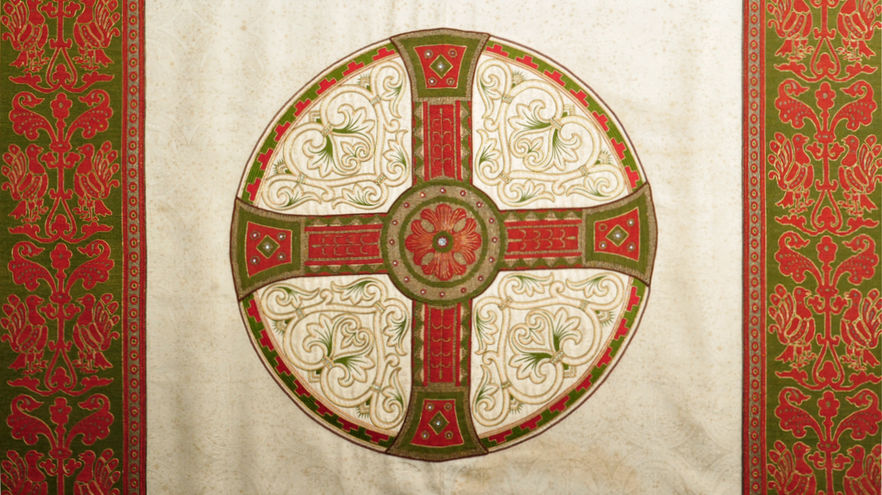beim Kloster St. Marienberg in Helmstedt

The term “paramentics” derives from the Latin parare mensam and can be translated literally as “setting the table”. Today, paramentics are an academic discipline of practical theology and therefore part of the training of pastors and deacons.
Paramentics are concerned with the appropriate decoration of ecclesiastical spaces. Their related academics are aesthetics, liturgy as well as Christian art. Besides material sciences, the most important topics are colour psychology, the liturgical calendar of the church year, the “dress code” of the clergy as well as the history of paramentics.
The craft of Christian paramentics can be dated back to the sixth century. A mosaic in the Basilica of San Vitale depicts an altar cloth for the first time. Three centuries later, a Roman index lists liturgical gowns. The canon of liturgical colours was created by Pope Innocence III. (twelfth century).
In 1858, Pastor Wilhelm Löhe founded a society for paramentics in the Frankish town of Neuendettelsau and he is considered to be the renovator of paramentics. Inspired by Löhe, Charlotte von Veltheim, abbess of St. Marienberg convent, founded the still existing parament workshop in 1862. Ever since, the following rule has been in effect here: Art is our craft!